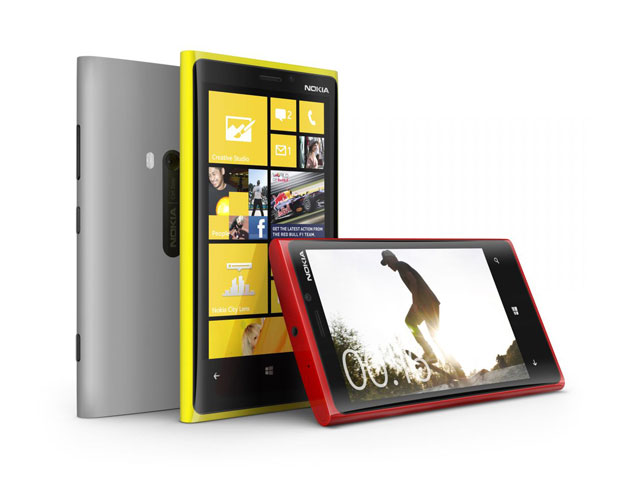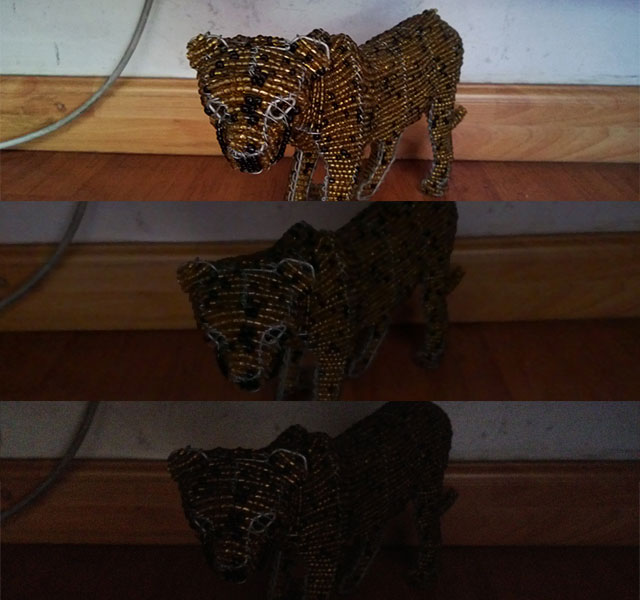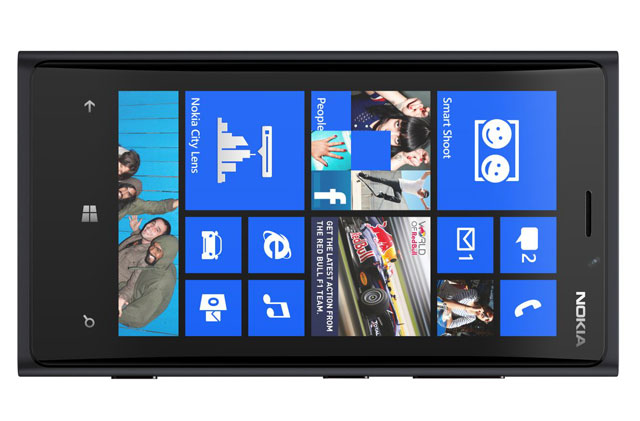
It’s been more than five years now since Apple pulled the rug from under Nokia with the original iPhone. Since then, Nokia, once the world leader in smartphones, has been scrambling to develop a product that can beat the iPhone as its market share and its stock price plummeted.
It’s late 2012, and the company is back with its best shot yet at regaining some of its lost glory: the new Lumia 920, powered by Microsoft’s new Windows Phone 8 smartphone software, is a darn good phone with a great screen and a fantastic camera. In many respects, the 920 is a flawed masterpiece: a wonderful piece of hardware let down by a few key design mistakes.
The first thing you notice when you pick up the Lumia 920 is its heft and its thickness. At 185g, the 920 weighs a full 52g more than the slightly larger Samsung Galaxy S3. It’s heavier even than the Galaxy Note 2, which has a gargantuan 5,5-inch screen.
The 920 weighs just too much to be comfortable. It’s also thick — more than 40% thicker than the iPhone 5, for example. It’s bulky and feels more like a weapon in your hand than a phone. This heft will be enough to put off some users. Others may be prepared to put up with it for the superb camera and the wireless charging — both of which contribute to the weight — as well as the amazing, 4,5-inch screen.
The Lumia 920 is powered by a dual-core 1,5GHz processor and has 1GB of RAM, ensuring a snappy and fluid user interface. The phone packs in 32GB of flash storage, which no doubt contributes to the recommended retail price of R8 000, and features an integrated coil for wireless charging — power mats are sold separately.
The phone has a large, 2 000mAh battery and, although this is smaller than the battery found in the Galaxy S3, we found we could easily get through an average day’s use, even with Bluetooth switched on. Some users have reported fast battery drain, however.
On the connectivity front, the 920 is kitted out with all the latest technologies, including “penta-band” 4G/LTE and dual-channel HSPA+. That’s jargon for a superfast connection, whether you’re on 3G or 4G. We were able to connect to Vodacom’s 4G network in Johannesburg without any hassles — that is, after we’d called the operator to enable it on our Sim card for the new technology. The phone supports download speeds, in theory, of up to 100Mbit/s.
But it’s the screen that is the first real standout feature of the Lumia 920. Using what Nokia calls PureMotion HD+ technology, it offers incredible contrast, with real, deep blacks. Best of all, it’s possible to read the screen clearly in bright, direct sunlight — something we’ve been unable to do on other high-end smartphones. A big plus.
That camera
It’s the camera, of course, that’s going to get most punters excited about the Lumia 920.
Featuring a Carl Zeiss lens, the camera offers 8,7 megapixels and a dual-LED flash. Nokia’s PureView technology promises blur-free images due to built-in optical image stabilisation and improved lowlight performance.
The bottom of the right-hand side of the handset includes a dedicated camera button that launches the camera and doubles as a shutter release. Users can also take photos by tapping anywhere on the display, after which the camera focuses and releases the shutter immediately rather than requiring an additional button or screen press when focus is achieved.
Tapping the on-screen settings button brings up icons that allow you to switch to video mode, switch between the rear- and front-facing cameras, turn the flash on or off, or switch “lenses”. The lenses include Bing Vision — a QR code scanner — and another called Smart Shoot, which captures five images in rapid succession and then allows you to pick the best features from each.
For example, if you’re capturing an image of a group of people, you can select the best facial expression for each from any of the five shots. You have to download Smart Shoot from the Windows Phone Store, which suggests that Nokia intends to expand the augmentation applications for the camera in future.

There’s also the option to tweak further settings like white balance and exposure compensation, and there’s the ability to use the built-in flash as a focus-assist light. When enabled, the flash illuminates the scene so that the camera can autofocus but isn’t used for the final shot. When combined with the image stabilisation, the result is crisp stills, even in lowlight conditions.
Similarly, the flash can be used for illumination when shooting video and the 920 offers two quality settings: 1 080p or 720p. Video is surprisingly stable for a mobile phone and devoid of the wobbliness so often seen on compact video recorders and phones.
In favourable lighting, the Lumia 920’s camera performs as well as any other high-end smartphone camera, and undoubtedly matches the results offered by your average compact camera.
But it’s in lowlight conditions that the Lumia 920’s camera shows its mettle. It’s simply outstanding, rivalling the results offered by dedicated compact cameras. This has long been the one area where phone cameras have been unable to match their standalone counterparts, and suggests the compact camera may become even more redundant in coming years.
Without fiddling with the settings, the camera produces excellent results, suggesting that those who long to exert a little more control will be similarly delighted with the output.
Editing tools are similarly easy to use, and cropping, touching up and sharing images or videos is simple and intuitive. There’s also the option to save images to Microsoft’s cloud-based SkyDrive for easy access from other Windows-powered devices. The handset comes with 7GB of free SkyDrive storage.
Nokia has found a further use for the Lumia 920’s superb camera: an augmented reality application called City Lens, which overlays information about local points of interest on a live camera display.
Because it works with GPS and the handset’s accelerometer, as you move the phone around, the information changes. Tapping on any of the points of interest brings up a menu that includes the option to get directions to it using Nokia Maps.
Even in South Africa, City Lens has a surprising wealth of information, something that is bound to get even better as Nokia Maps is updated and more data is added to the service.
The software
Windows Phone 8 is a big improvement over its predecessors and is still very different — and therefore appealing — from anything else on the market. The live tiles work well, and can now be scaled to three different sizes. You’ll have great fun working out an arrangement and colour scheme that’s best for you.
As in previous Lumia devices, Nokia has included Drive — its excellent free navigation software — and Music, which allows users to stream music by genre and to purchase and download tracks or albums that they like. It works very well and, as far as we know, is still the only legal means of buying digital music in South Africa.

As a relatively new smartphone operating system, there are, however, still key applications missing from Microsoft’s app store. Although the store has 120 000 apps, and 46 of the most popular apps on other platforms are apparently available for Windows Phone, we were irritated that we couldn’t find basic programs such as Chrome, Instagram and Zinio. Let’s hope this changes soon.
We’d also like to see a unified notifications centre similar to the ones found in Android and iOS. It is a little annoying having to check live tiles for notifications when it would be much easier simply to swipe in from the side of the screen for a list.
Conclusion
In summary, the Lumia 920 is a great-looking phone. Its distinctive colours and unique operating software are sure to turn heads.
Will it be enough to convince consumers to switch away from their Androids and iPhones? Time will tell, but one thing’s for sure: Nokia and its partner Microsoft still have a tough road ahead of them getting consumers to think about moving to their platform.
There’s no doubt that Lumia 920 is Nokia’s best Windows Phone-powered smartphone to date. It has plenty going for it, especially its superb camera, but it’s let down by its weight and a lack of apps. It might take one more generation before the Lumia line-up is truly ready to take on the world and win big against the current market leaders.
That said, though, if you’re itching to get your hands on a Windows Phone device, and one that will take amazing photographs to boot, the Lumia 920 is for you. — (c) 2012 NewsCentral Media
- See also: Nokia Lumia 920 launched in SA




